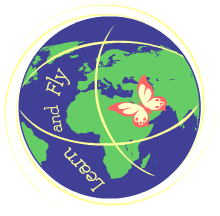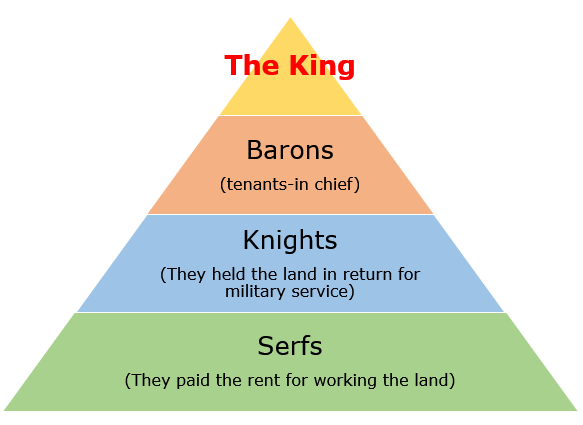From Celts to Normans: brief history of the populations that settled in the British Isles from the Celts around 700 BC until the conquest of the Normans in 1066.
In the image below, the time line that also explains how the different populations with their culture and language have contributed to the development of modern English.
When studying a language it is easy to come across words or structures that have similarities to different linguistic strains. The English language, for example, is a substantially Germanic language, but it has many words of Latin and French origin in the common vocabulary, so it is easy to understand how contacts with those peoples were long-lasting and popular enough to influence and modify the language of the dominant people, which has retained that linguistic part capable of representing part of the cultural reality of that specific historical period.
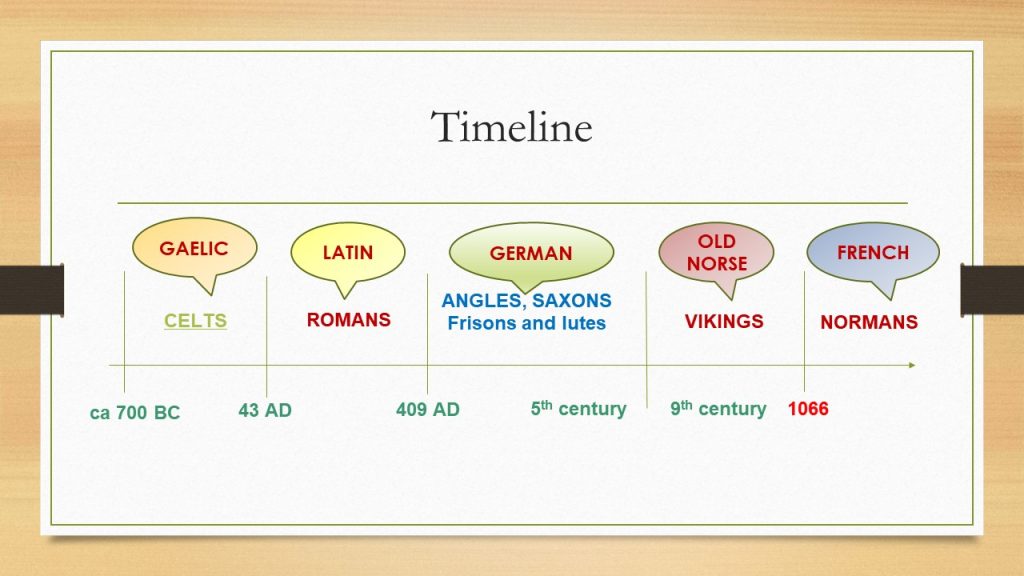
700 BC – 1066
Where did they come from?
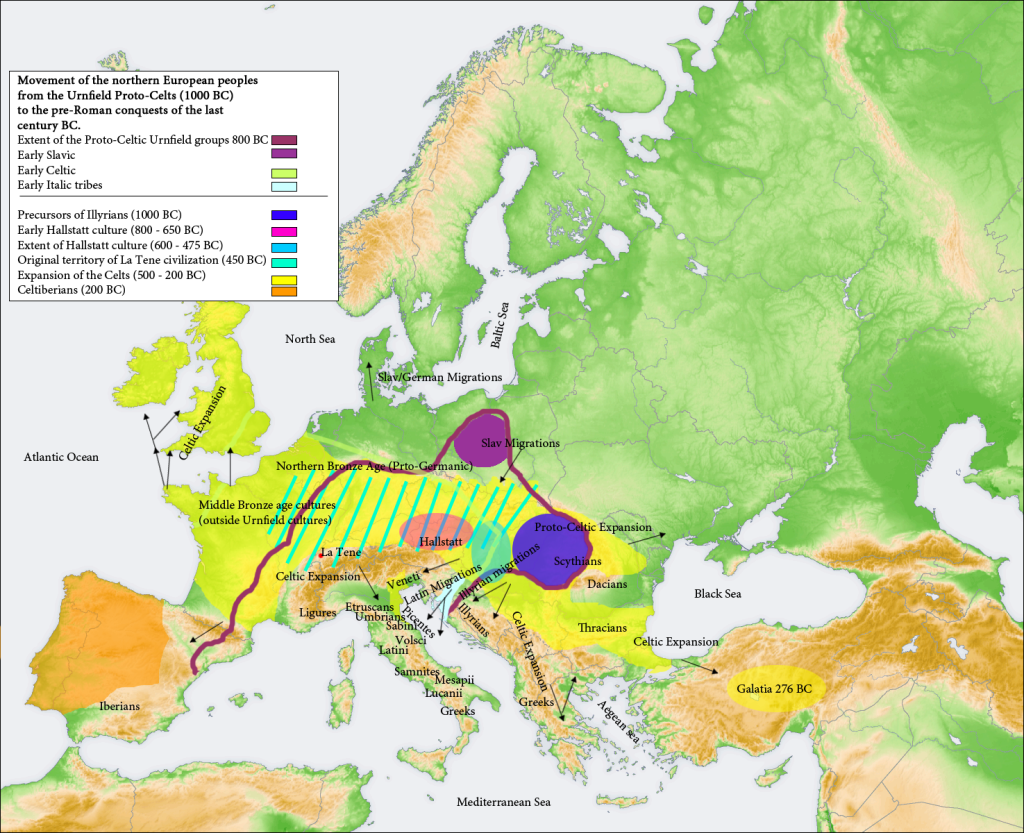
- The term ‘Celts’ is a general name given to the ancient tribal groups which spanned across western and central Europe during the Late Bronze Age and into the Iron Age.
- Around 700 BC, Celtic tribes coming from North and Western Europe settled in Britain.
Society
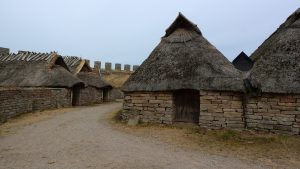
- Celtic society was tribal, organised in extended families called clans.
- They lived in wooden huts with thatched roofs.
- The village was protected by a wooden palisade.
- Sometimes they built hill forts, surrounded by ditches filled with water.
- The Celts were warriors, and their weapons were made of iron.
- Women were almost equal to men: they sometimes ruled large tribes and fought bravely in battle.
- Their economy was based on fishing and agriculture; they are believed to have introduced the iron plough.
Religion
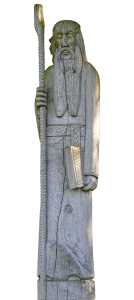
- The Celts worshipped the natural elements: the sun, the moon, and water.
- The Druids were priests, who performed rites in the woods and near the water.
- Druids were the most important figures in Celtic society: they filled the roles of judge, doctor, diviner, mystic and scholar.
Curiosity

Druids had their temples in groves, and mistletoe, a plant used to decorate British homes at Christmas, was considered holy.
Celtic summer ended on 31st October and Celts believed that evil ghosts entered the body of a living creature on that night, so they used to wear frightening costumes to send the spirits away. Later, Christians replaced the pagan practice and dedicated the 1st November to ‘All Hallows’ Day’. So, the 31st October became ‘All Hallows’ Eve’ (=Halloween).
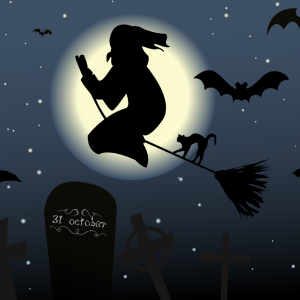
Language
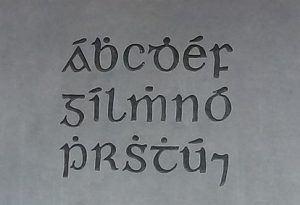
From the Celtic languages, which are a group of related languages descended from Proto-Celtic, developed in the British Isles three living languages:
- Irish Gaelic, spoken in Ireland
- Scottish Gaelic, used in the north of Scotland
- Welsh Gaelic, whose native name is Cymraeg, is used in Wales as a national language together with English.
The invasion
Britain (the name comes from the Greco-Roman word ‘Pretani’ → Britannia/Brittania) attracted Rome for its mild climate, due to the Gulf Stream, and also because it was a very productive land, that permitted the Celts to export corn and animals to the European mainland.
Julius Caesar first attempted to conquer England in 55 BC, but he didn’t succeed.
The Roman conquest actually began in 43 AD under Emperor Claudius. After three years the Romans gained control of the Central and Southeastern regions. The Romans tried to conquer Caledonia, as they called Scotland, but after a century without success Emperor Hadrian ordered to build a wall to the North to protect the Roman colony from the Scots raiders. Long stretches of Hadrian’s Wall still exist.
When the Empire began to collapse, Emperor Honorius was obliged to withdraw his soldiers to defend Rome in 409 A.D. The Roman settlers were left alone to fight against the Scots, the Irish and Saxon raiders from Germany.
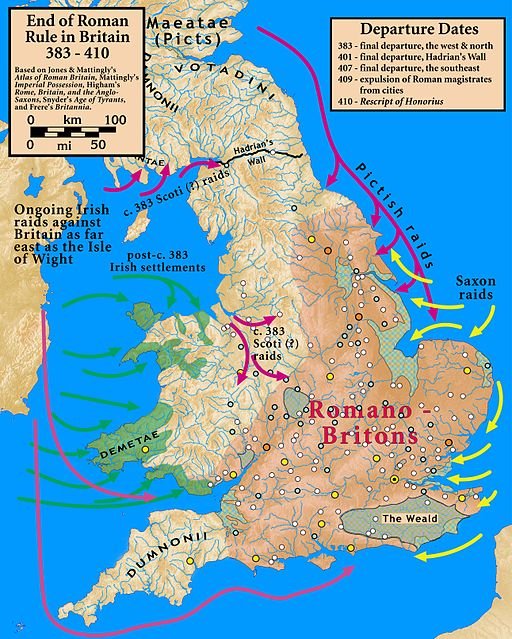
The effects of Roman presence didn’t last long, but a few of them survive today.
The roads: the Romans built a vast network of roads. Four great highways spread from London to the North, Northwest, the West and the Southwest, and a large number of minor roads, which connected cities, towns, ports and military sites.
The towns were the basis of Roman administration and civilisation. There were three different kinds of towns:
- coloniae, inhabited by Roman settlers
- municipia, where the inhabitants were given the Roman citizenship;
- civitates, which replaced the old Celtic tribal capitals allowing Romans to administrate and control the countryside.
At the beginning, most of them were army camps and we can trace the Roman origins of many English towns and cities by their names ending with: ‘caster’, chester, cester, all deriving from the Latin word ‘castra’ that stands for ‘military camp’.
If you want to learn more about the Romans in Britain visit the site:
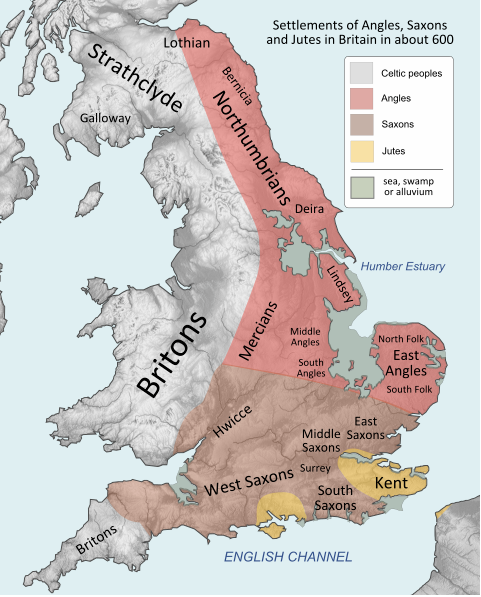
Around 450 three Germanic tribes began raiding the British coasts and progressively settled in: the Jutes settled mainly in Kent and along the south coast; the Angles in the east and in the north Midlands; the Saxons between the Jutes and the Angles.
Most Britons were driven into the mountains in the far west, which the Saxons called Weallas (=Wales) meaning the ‘land of the foreigners’.
The Anglo-Saxons established seven kingdoms, the Heptarchy: East Anglia, Essex, Kent, Mercia, Northumbria, Sussex and Wessex.
At first, the Anglo-Saxons worshipped several gods, but at the end of the 6th century Pope Gregory I sent the monk Augustine to bring Christianity back to England and with the help of Celtic monks Christianity spread across the kingdom. Monasteries progressed and became important centres of culture. The Christian monks preserved and transmitted Anglo-Saxon culture.
Society
Anglo-Saxon society was hierarchical.
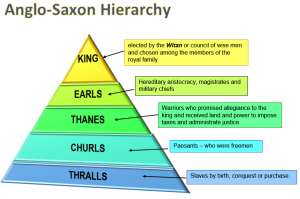
The newcomers used the runic alphabet, which was composed of a series of 36 characters, used for carving inscriptions on stone or metal.
Anglo-Saxon culture was based on a rich tradition of oral literature, symbolised by the mead-hall, a large room in a building or castle where warriors and kings gathered to feast and where scops would entertain them with songs about heroes and their adventures.
The scop was an Anglo-Saxon poet who entertained early Germanic kings and soldiers by reciting poetry, often accompanied by a harp or similar instrument. He could travel from one village to another and sing songs depicting important events or celebrate the glory of important figures in history. Scops were not just poets or entertainers: they helped to preserve the history of the Germanic tribes and contributed to the construction of a national identity.
Viking Settlements
Another group of tribes called Vikings raided Britain between 750 and 1050. They came from Scandinavia and Denmark.
The name ‘Viking’ means ‘a pirate raid’ in the language ‘Old Norse’.
Around the second half of the 9th century, Vikings took control of the Anglo-Saxon kingdoms of Northumbria, East Anglia and most of Mercia. Alfred the Great, king of Wessex, fought against Vikings and after some years a peace agreement was signed between the Anglo-Saxons and the Vikings who settled in the north and east of England, a territory that was called the Danelaw.
The Vikings also settled in some Scottish regions, and on the Shetland and Orkney Islands.
The Vikings came to Britain because they were drawn to its wealth. In fact Britain was well known for its trade centres. When they settled, they also became farmers thanks to the mild climate of the island.
The Vikings founded many towns and cities in Britain and you can trace their Viking origin from the names that end in -by, -thorpe or -ay. The most important of them was the city of York, or ‘Jorvik’. Over 10,000 people lived there and it was an important place to trade goods.
Religion
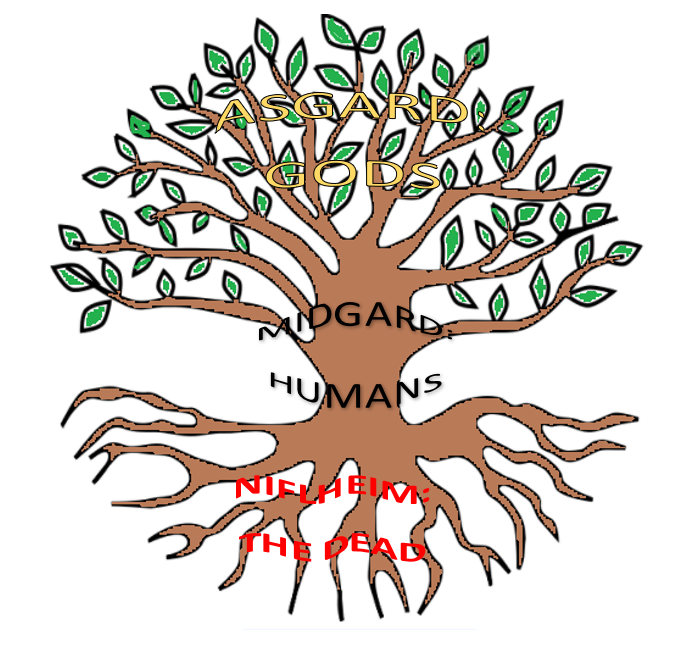
Vikings believed that everyone lived in a very big tree and the gods lived at the top of the tree, called Asgard. Humans lived in Midgard (in the middle of the tree). At the bottom of the tree was Niflheim inhabited by the dead people.
The chief of the gods was Odin who lived in Valhalla (=Odin’s hall/house)
Their mythology is also full of giants and elves.
The Anglo-Saxons Kings reigned until 1013, when the Danish King started to fight against the Anglo-Saxons, causing a period of instability with alternating Danish and Anglo-Saxon kings until 1066.
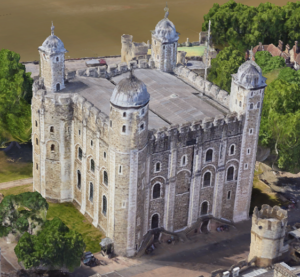
King Edward III reigned until January 1066 but he had no heirs. He had designated his cousin, William II Duke of Normandy, heir to the throne. But his brother-in-law Harold II, Earl of Wessex, was proclaimed King of England with the support of the Council of Wise Men (Witan).
William landed in England, defeated Harold definetely near Hastings facilitated by the country’s internal divisions and was crowned King of England with the name of William I, better known as William the Conqueror, on Christmas Day that same year.
1066 is a very important year because since the Norman conquest the nation has never been invaded on land.
William I introduced the feudal system based on tenancy of land and on a rigid hierarchy.
He organized the territories into shires entrusted to royal officials, the sheriffs, who administered justice and collected taxes.
In 1086 William ordered the compilation of the Domesday Book: the first national census of all lands, families and animals in England and Wales and all the data were used to calculate the existing wealth and consequently the taxes that could be collected by the king.
Medieval Society in England
At the time of William the Conqueror society was basically divided into three classes which had different functions and which used three different languages as can be seen from the following table.
| CLASS | FUNCTIONS | LANGUAGE |
| Nobles | They rule and administrate the country | French |
| Clergy | They are closely related to Rome upon which their spiritual power depends, though under the control of the king who pays Peter’s Pence to the Holy See of the Catholic Church. | Latin |
| Paesants | They work the land for the lord. | Anglo-Saxon |
